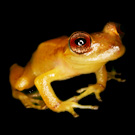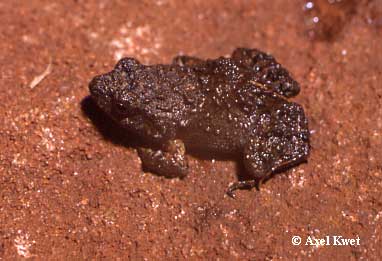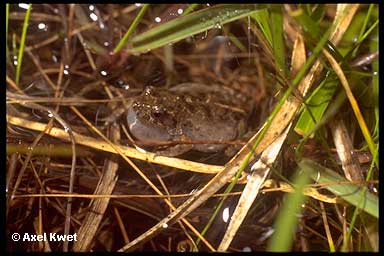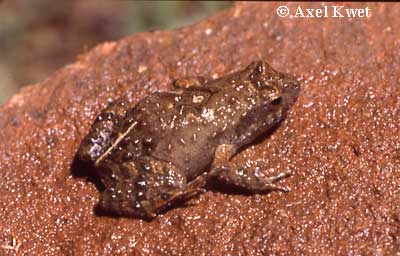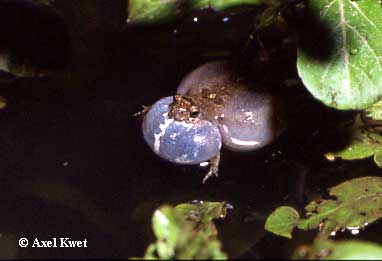

|
 |
 |
 |
 |
 |
 |
 |
 |  |
 |
 |
Merkmale |
Männchen 15-21 mm, Weibchen bis 25 mm. Rückenfärbung variabel, in der Regel braun, meist mit unregelmäßigen dunklen Flecken und Drüsenleisten. Auffällige X-förmige Drüse in der Rückenmitte. Dunkler Seitenstreifen. Bauch schwarz oder dunkelbraun gefleckt, Kehle mit heller Mittellinie. Ohne deutliche schwarze Drüsenflecken in der Lendenregion. |
 |
 |  |  |
 |
 |
Verbreitung |
Südbrasilien und Uruguay sowie Teile Argentiniens. |
 |
 |  |  |
 |
 |
Lebensraum |
Bewohnt offenes Grasland (campos), zur Laichzeit an größeren permanenten, stehenden Gewässern, aber auch an Pfützen und in Reisfeldern. |
 |
 |  |  |
 |
 |
Biologie |
Die Eier werden in kleinen Schaumnestern im Sommer abgelegt. |
 |
 |  |  |
 |
 |
Literatur |
Achaval, F. & A. Olmos (2003): Anfibios y reptiles del Uruguay. 2. edition. - Montevideo, Uruguay (Graphis Impresora), 136 pp.
CÉspedez, J. A. (1996). Primera cita de Physalaemus riograndensis Milstead, 1960 para la provincia de Formosa y comentarios sobre su distribucion actual (Anura: Leptodactylidae). Cuad. Herp., Tucumán 10(1-2): 75-77.
Chebez, J. C., E. Krauczuk, et al. (1995). Inclusion de Physalaemus riograndensis Milstead, 1960 en la batracofauna de Misiones, Argentina, y otros aportes para el conocimiento de su distribución (Amphibia: Anura: Leptodactylidae). Cuad. Herp., La Plata 9(1): 57-59.
Langone, J.A. (1994): Ranas y sapos del Uruguay (Reconocimiento y aspectos biológicos). - Museo D. A. Larraņaga, Montevideo, Serie de Divulgación, 5: 1-123.
Prigioni, C. M. and J. A. Langone (1983). Nuevo hallazgo de Physalaemus riograndensis Milstead, 1960, (Anura, Leptodactylidae). Bol. Soc. Zool. Uruguay, 2.a Época, Tristan Narjava 1: 81-84. |
 |
 |
|
